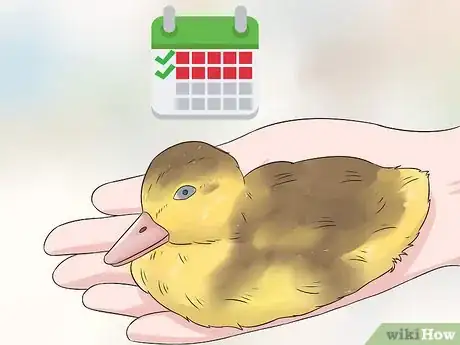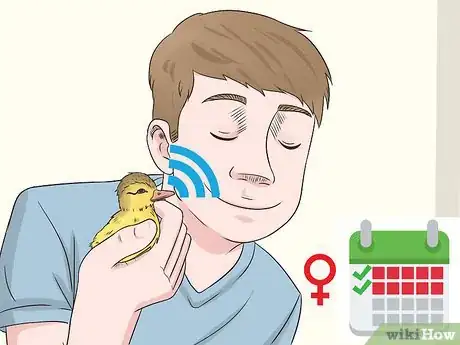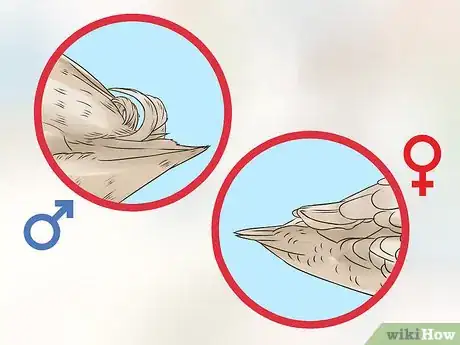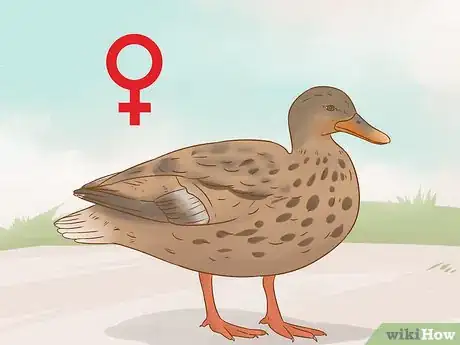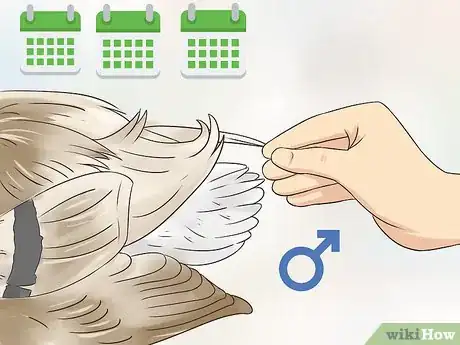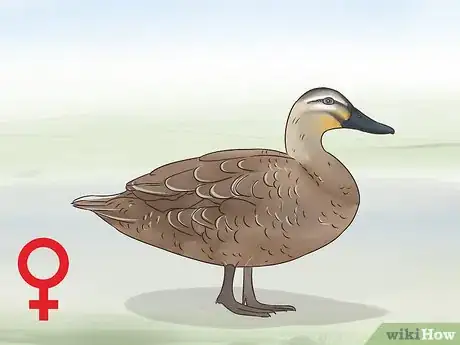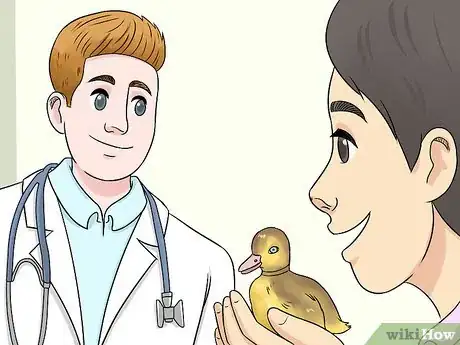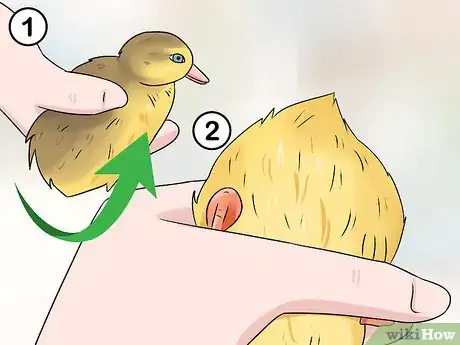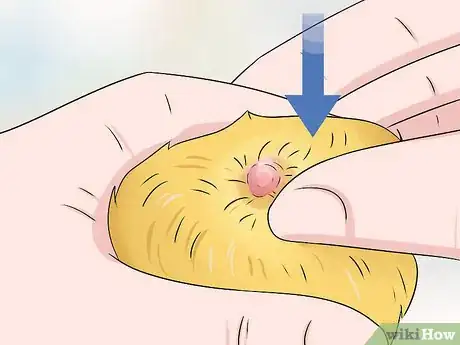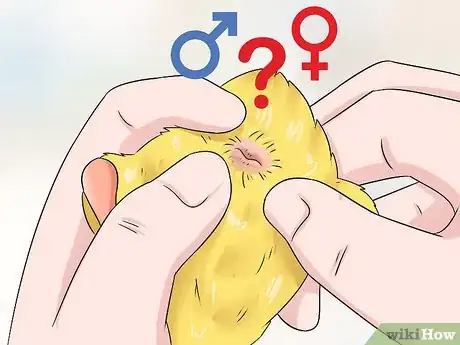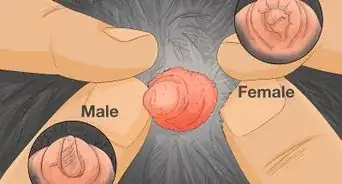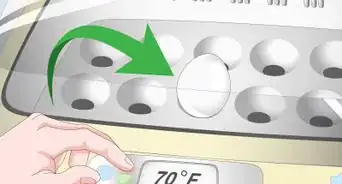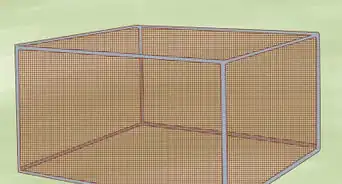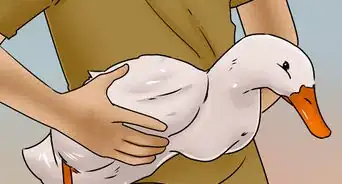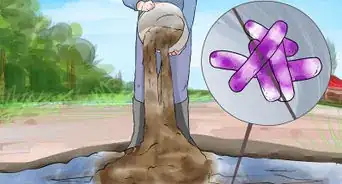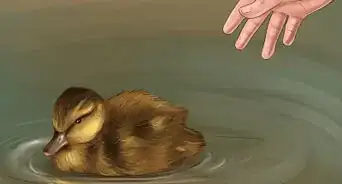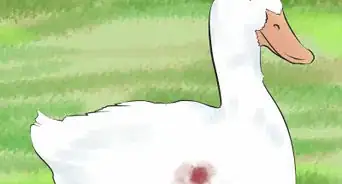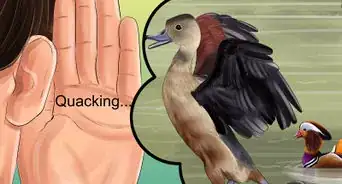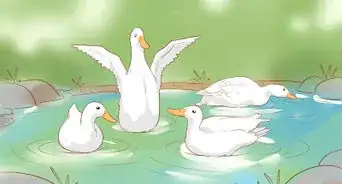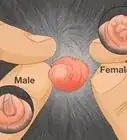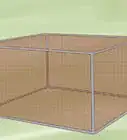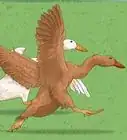This article was co-authored by wikiHow Staff. Our trained team of editors and researchers validate articles for accuracy and comprehensiveness. wikiHow's Content Management Team carefully monitors the work from our editorial staff to ensure that each article is backed by trusted research and meets our high quality standards.
There are 8 references cited in this article, which can be found at the bottom of the page.
This article has been viewed 226,775 times.
Learn more...
Figuring out the sex of a baby duck can be surprisingly difficult when they're young and generally you won't be able to tell by looking at them until they're much older. As such, there are specific methods experienced duck owners use to figure out safely, and precisely, what sex their ducklings are. The majority of these methods will be applicable to most breeds of duck, but there will be some variation when it comes to physical properties (such as color).
Steps
Identifying Sex Through A Duckling's Voice
-
1Wait 2 weeks for the ducklings to mature if you can't tell the difference. When they're just babies it's quite difficult to figure out the gender by voice simply because the calls are so similar. Wait for at least 2 weeks before starting to intently examine their voices to find any differences.
-
2Listen to female duckling voices so you can identify them later. To be able to identify the sex of a duck by the voice you'll need to be familiar with the differences. A female duck's voice is similar to that of the stereotypical quack which grows louder and brasher as the duckling grows older.
- Female ducklings can start quacking as soon as they're 2 weeks old, but it may take them as long as 8 weeks for them to quack properly.[1]
-
3Listen for a monotone peeping from male ducks. Male duckling voices are quite different from what's commonly associated with duck voices. Males tend to be much quieter and slowly develop a monotone grumble.
- Unlike their female counterpart, male ducks actually grow quieter as they grow older and are harder to distinguish from the females.
- Male Muscovy ducks may hiss instead so also be on the look out for this particular variation.
- You can research male and female duckling voices online.[2]
Sexing via the Plumage
-
1Determine if your breed of ducks has a difference in plumage between sexes. Although it is said that the easiest way to tell the difference between a male and a female duck is their plumage, some duck species have no plumage difference through sex, so research carefully first before beginning.[3]
-
2Identify the more colorful male duck. In general, a male duck will be much more colorful than their female counterpart with vibrant head and chest plumage.[4]
- For instance, a male Mallard holds a rich chocolate color and has a white collar around its neck.
- The male's colorful feathers is purpose-built to attract mates in mating season. The more flashy the duck, the more likely they'll find a mate.
-
3Look for duller colors in females. Unlike their male versions, female ducks tend to be more reserved in their coloring. A female duck's plumage will be a mixture of brown and gray and their bills will share similar colors, sometimes with a splash of orange.[5]
- For instance, a female Mallard is chestnut brown all over with a gray and orange bill.
- There is a great amount of variation in duck coloration so be sure to research your particular duck species to find any breed-specific distinguishing colors.
-
4Search for the drake feather to identify a male. Another difference between male and female ducks is how their feathers present themselves. Around 3 months old a male duck's tail feathers may start to curl upwards whereas a female duck's tail feathers are completely flat.[6]
- The drake feather resembles several of the duck's normal feathers that have curled up and back towards the duck.
-
5Look for increased feather grow in female ducks. Generally, a female duck will grow in its feathers a lot quicker than a male, especially around the wings and the tail. Watch your ducklings as they grow and make a note of which ducklings exhibit feather growth first. These are likely the female ducklings.
Examining a Duckling's Vent
-
1Consult a vet if you are unsure. Venting a duck can potentially harm it, so you must be extremely careful if you intend to do this process yourself. If you're experienced it will be fine, but if you haven't done it before perhaps it's best to visit a vet who will do it for you.[7]
- If in doubt, get someone more experienced to physically show you how to vent a duck. It is not a process that should be guessed at.
-
2Hold the duckling upside down. Gently hold the duckling and turn it upside down so that its feet fall into its belly.[8]
- You can use a table to be more steady if you think the duckling will sit still.
-
3Apply pressure below the vent. The vent (otherwise known as the cloaca) is a small slit under the duckling's feathers that holds its genitals. It can be located a short way from its rear embedded under the feathers.
- With your thumb, gently apply pressure about 1⁄2 inch (1.3 cm) below the duck's vent.[9]
- The duck may accidentally excrete at this point. Wipe it off and reapply the pressure.
-
4Push back the tail then apply pressure to the vent. With your other hand, gently tuck the duck's tail towards its back. Then, with 2 fingers, gently apply pressure on both sides of the vent.
- When you feel pushback, let go for a few seconds, then press in once more. By doing so, you are inverting the cloaca (the animal's urinary tract).[10]
- If the cloaca doesn't invert, try applying pressure again until it does.
-
5Identify a penis or a vagina. A male penis will have a corkscrew shape and can be pink, white, or even a dark gray. A vagina can be harder to spot, but look for a pair of vaginal lips to be certain.[11]
- Sometimes a male duck can be mistaken for a female if it hides its genitals. This can be double checked by venting the duck again when it's a little bigger.
-
6Release pressure on the vent. Let go of the duckling's vent and let the cloaca reorient. If it doesn't immediately, gently rub near it to ease it back inwards.[12]
Community Q&A
-
QuestionWhere is the female duck's vent for mating? Is it on the back between her feathers?
 OlliieCommunity AnswerThe vent is just underneath the tail quiff. It is circular and resembles a outward belly button.
OlliieCommunity AnswerThe vent is just underneath the tail quiff. It is circular and resembles a outward belly button.
References
- ↑ https://www.backyardchickens.com/threads/sexing-ducklings-please-check-here-first-d.181147/
- ↑ http://www.majesticwaterfowl.org/artquacks.htm
- ↑ http://animals.mom.me/tell-duck-boy-girl-4945.html
- ↑ https://www.roysfarm.com/differences-between-male-and-female-ducks/
- ↑ http://animals.mom.me/tell-duck-boy-girl-4945.html
- ↑ https://www.feathersite.com/Poultry/Ducks/BRKDucks.html
- ↑ https://www.backyardchickens.com/threads/sexing-ducklings-please-check-here-first-d.181147/
- ↑ http://animals.mom.me/tell-difference-male-female-muscovy-ducks-7364.html
- ↑ https://www.backyardchickens.com/threads/sexing-ducklings-please-check-here-first-d.181147/
About This Article
Telling the sex of your baby duck can be challenging, but there are a few simple methods that can help you figure it out. For example, 2 weeks after your ducklings are born, listen to their voices carefully. You’ll notice a female duck’s voice is similar to a quack while a male duck’s voice is more of a peep. If your breed of duck has a difference in plumage between the sexes, then you can identify the male by its colorful feathers while the female will have duller colors. Additionally, at around 3 months the male’s tail feathers may start to curl upwards whereas the female’s will stay completely flat. To learn how to examine a duckling’s vent to tell its sex, keep reading!
